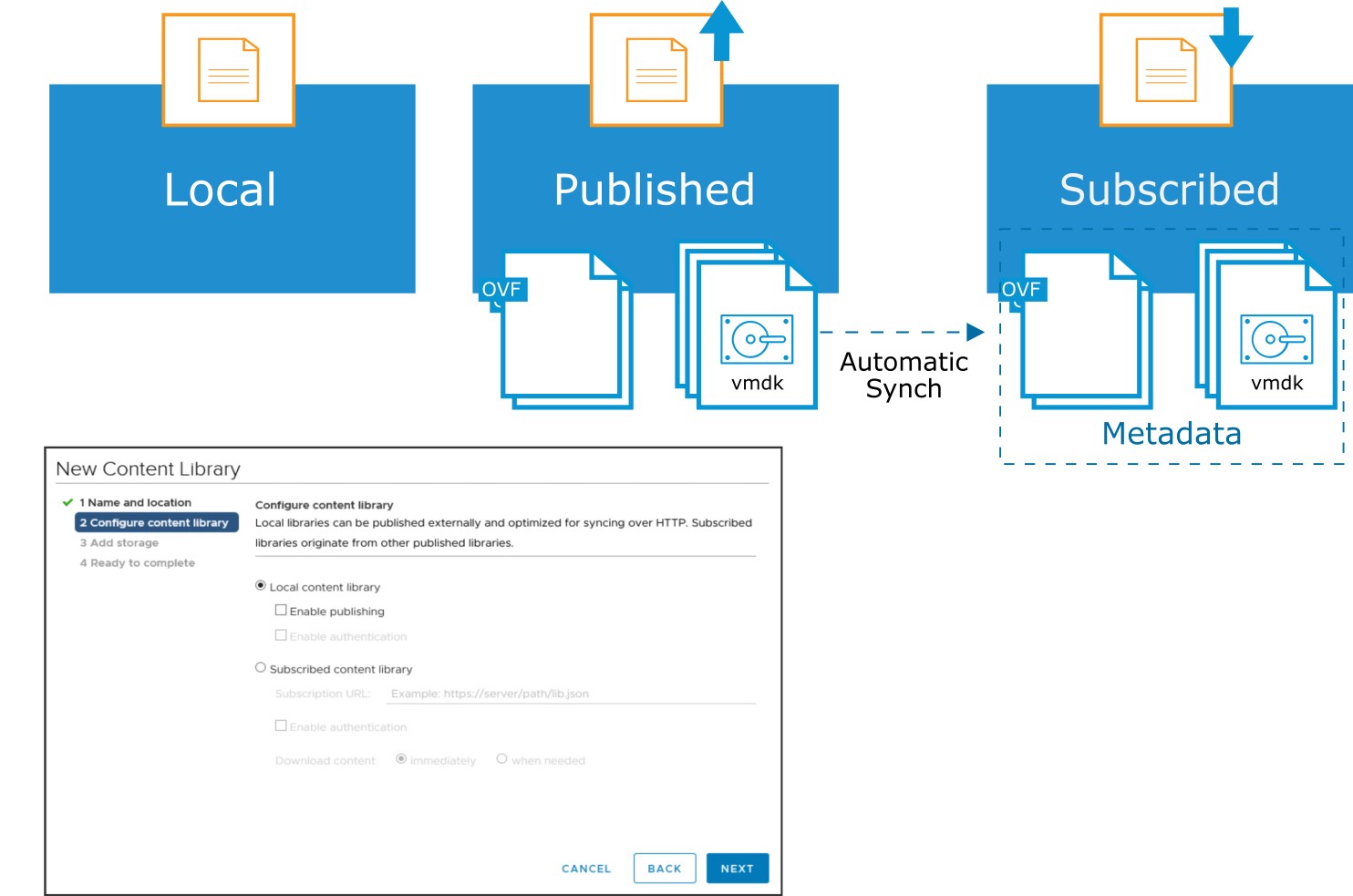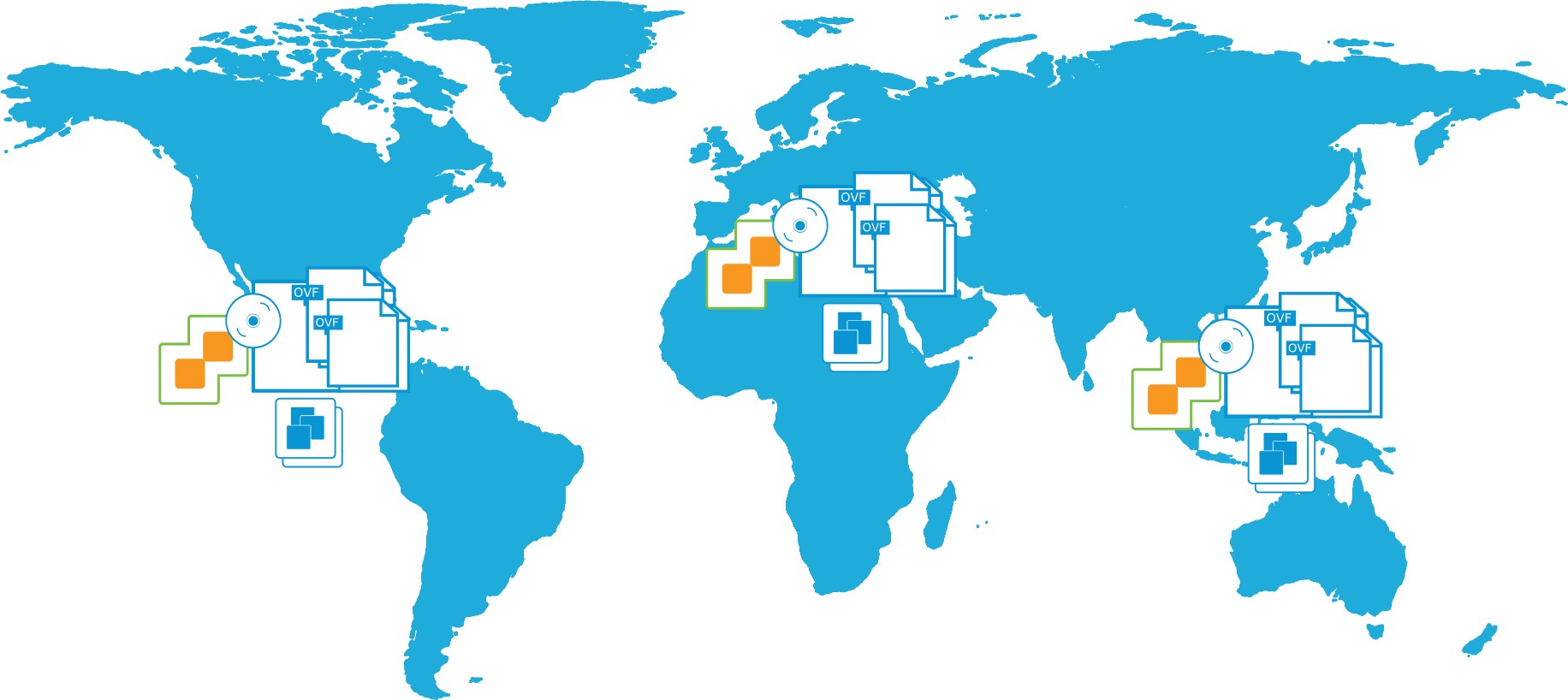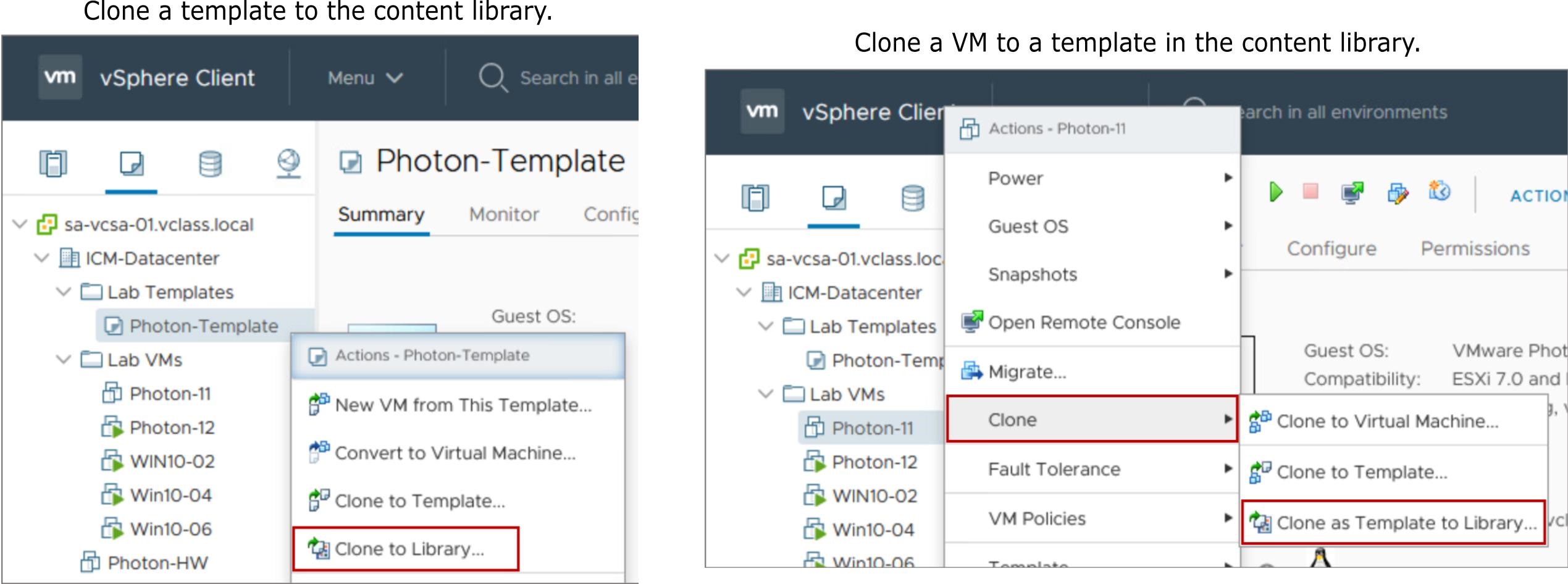
About Lesson
Working with Content Libraries
Learner Objectives
After completing this lesson, you should be able to meet the following objectives:
- Identify the benefits of a content library
- Recognize types of content libraries
- Deploy a virtual machine from a content library
About Content Libraries
Content libraries are repositories of OVF templates and other file types that can be shared and synchronized across vCenter Server systems globally.

Benefits of Content Libraries

Storage and consistency are key reasons to install and use a content library. Using content libraries, administrators can perform the following functions:
- Store, version, and share content.
- Perform distributed file management.
- Synchronize content libraries across sites and vCenter Server instances.
- Mount an ISO file directly from a content library.
- Perform live updates of VM templates
Types of Content Libraries
Types of content libraries are local, published, and subscribed.

Adding VM Templates to a Content Library
Library items include VM templates, vApp templates, or other VMware objects that can be contained in a content library.

Deploying VMs from Templates in a Content Library

- The templates in the content library can be used to deploy VMs and vApps.
- Each VM template, vApp
- template, or other type of file in a library is a library item.
- You can also mount an ISO file directly from a content library.
Review of Learner Objectives
After completing this Working with Content Libraries lesson, you should be able to meet the following objectives:
- Identify the benefits of a content library
- Recognize types of content libraries
- Deploy a virtual machine from a content library
Join the conversation